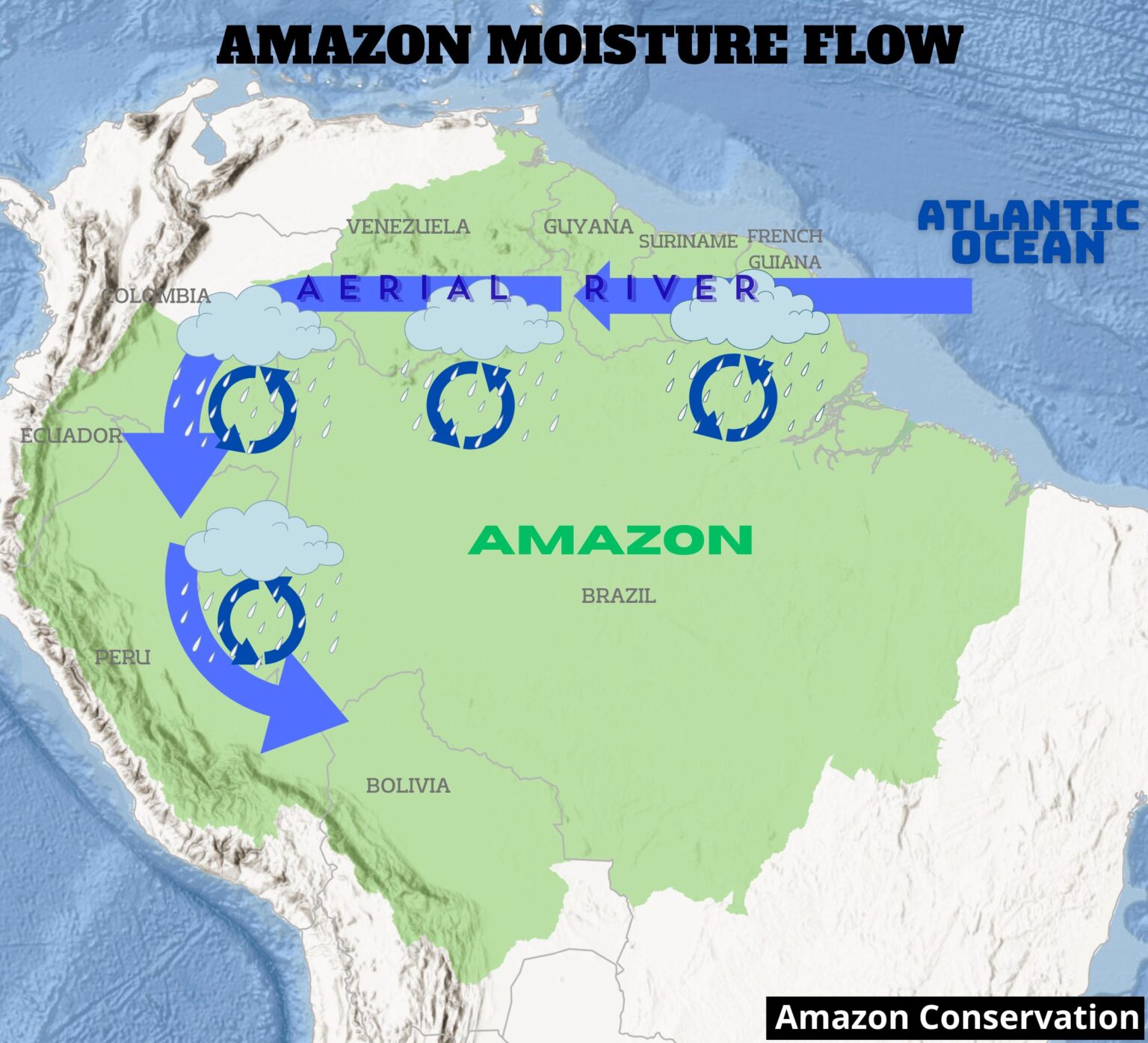MAAP #232: The Amazon Tipping Point – Importance of Flying Rivers Connecting the Amazon
September 12, 2025
https://www.maapprogram.org/amazon-flying-rivers/&media=print" target="_blank">Download PDF
The Amazon biome, stretching over a vast area across nine countries in northern South America, is renowned for its extreme diversity (biological and cultural) and its abundant water resources. Indeed, the major features of the Amazon are linked by interconnected
water flows, both on land and in the air (Beveridge et al. 2024).
The natural phenomenon of aerial moisture transport and recycling, also known as “
aerial rivers” and popularized in the press as “
flying rivers,” has emerged as an essential concept related to the conservation of the Amazon. In short, moisture flows from the Atlantic Ocean across the Amazon, uniquely facilitated by the rainforest itself. As they move westward, these flying rivers drop water onto the forest below. The forest subsequently transpires moisture back into them, thus
recycling water and supporting rainforest ecosystems far from the Ocean source. For example, the
Intro Map illustrates the aerial river for the southwest Amazon.
 Intro Map. Amazon moisture flow (aerial river) for the southwest Amazon. Source: Amazon Conservation/MAAP
Intro Map. Amazon moisture flow (aerial river) for the southwest Amazon. Source: Amazon Conservation/MAAP
Continued deforestation and forest degradation, however, will disrupt and diminish the critical east-to-west aerial water flow, inducing a “
tipping point” of impacted regions that would transition from rainforest to drier savannah ecosystems.
In this report, we aim to both summarize the current state of knowledge on the movement of atmospheric moisture across the Amazon and develop novel analyses based on this information. Overall, we aim to show the
critical connections between the eastern and western Amazon, and how these connections change during the major seasons (wet, dry, and transition) of the year.
…
